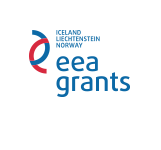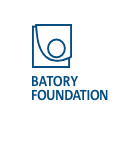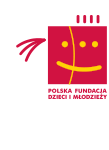Analysis of how HIV and people living with HIV are presented in national media
Combating discrimination
Completed
małopolskie
Kraków
2014-10-01 - 2016-03-31
69 780,05 PLN
62 780,05 PLN
health/healthcare
Project description
Polish media communications about HIV infections are formulated in a stigmatizing and judgmental manner, the value of their contents is questionable, erroneously describing routes and circumstances of virus transmission and perpetuating the stigmatizing category of risk groups, which includes usually homosexual men, sex workers and drug users. In this manner the media not only deepen the exclusion and discrimination of the groups listed above, but also hinder prevention activities, contributing to a false sense of security and discouraging persons who do not identify themselves with any of these groups from HIV-testing.
The aim of the project was to promote good language practices and non-stigmatizing ways of phrasing media messages about HIV/AIDS thanks to the identification of stigmatizing contents in selected printed media and dissemination of results to the general public.
A report summarizing the results of information research about HIV/AIDS in the Polish press has been drafted under the project. The key activity included the analysis of press materials regarding HIV/AIDS published in the most influential dailies and weeklies with regards to their correctness, image conveyed and language used. 297 texts published between November 2012 and December 2014 in the six most often quoted newspapers: three national dailies and three weeklies, were covered in the analysis. On this basis a report was drafted describing the image of virus transmission and of persons infected being conveyed by the press and readers were presented with the topic of seropositiveness in a systemic, sociological and psychological approach. The text also included practical guidelines for correct phrasing of messages about HIV/AIDS in the press.
The publication (300 copies) is disseminated in cultural and educational institutions (especially in press agencies, editorial teams, journalist associations, journalism students’ organisations).
We use the grant for capacity building
The aim of the project was to promote good language practices and non-stigmatizing ways of phrasing media messages about HIV/AIDS thanks to the identification of stigmatizing contents in selected printed media and dissemination of results to the general public.
A report summarizing the results of information research about HIV/AIDS in the Polish press has been drafted under the project. The key activity included the analysis of press materials regarding HIV/AIDS published in the most influential dailies and weeklies with regards to their correctness, image conveyed and language used. 297 texts published between November 2012 and December 2014 in the six most often quoted newspapers: three national dailies and three weeklies, were covered in the analysis. On this basis a report was drafted describing the image of virus transmission and of persons infected being conveyed by the press and readers were presented with the topic of seropositiveness in a systemic, sociological and psychological approach. The text also included practical guidelines for correct phrasing of messages about HIV/AIDS in the press.
The publication (300 copies) is disseminated in cultural and educational institutions (especially in press agencies, editorial teams, journalist associations, journalism students’ organisations).




